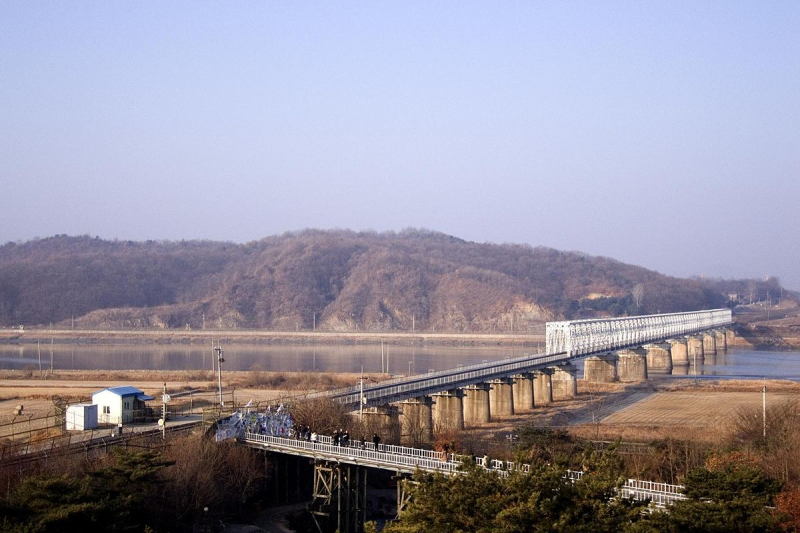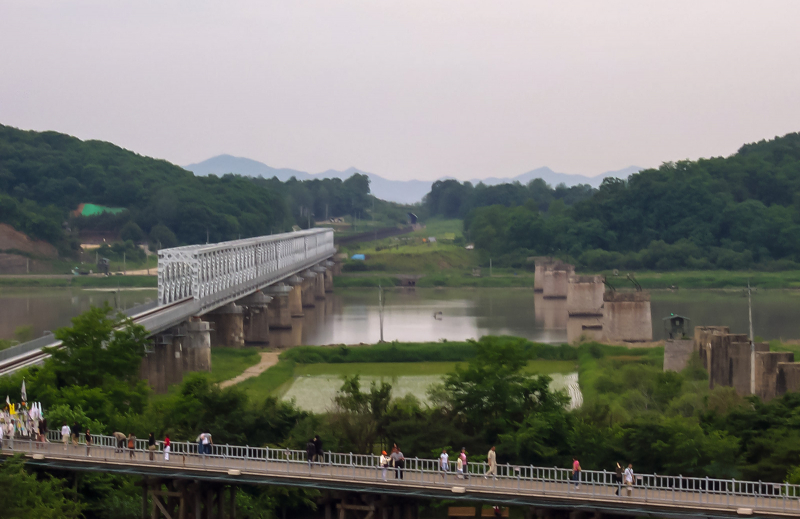Imjin

The Imjin River, sometimes known as the Rimjin River, is Korea's seventh largest river. This is one of the longest rivers in North Korea. It flows from north to south, passing through the Demilitarized Zone before joining the Han River near the Yellow Sea, downstream of Seoul. The Imjin War is not named for the river. The Battle of Imjin River, fought during the Seven Years War in 1592, and the Battle of the Imjin River, fought during the Korean War, were both fought on the Imjin River.
On November 4, 2018, a 20-member team made up of ten North Koreans and ten South Koreans began a collaborative inter-Korean survey with the goal of establishing a Joint Utilization Zone along the Imjin River's estuary. Under the protection of troops on both sides of the Korean border, citizens would be able to visit the estuary for tourism, environmental conservation, and the collecting of construction aggregate. The councils of South Korea's Gangwon and Gyeonggi provinces, which share a border with the DMZ, signed a "peace working agreement" at Dorasan Station in Paju on November 5, 2018, approving the Joint Utilization Zone on a local level. On December 9, 2018, the inter-Korean survey of the Imjin River's estuary was finished. By January 25, 2019, the updated map of the river's estuary, which includes newly identified reefs, was to be made public.
The active channel of the Imjin River occupies only about 150 to 200 feet of the dry riverbed's 1,200-foot (370-meter) width, which is surrounded by nearly vertical rock cliffs rising 75 feet (23 meters) above the mean low water level. It reaches flood heights of 48 feet (15 m) above mean water level and a velocity of 15 to 20 feet per second (6 m/s), fed by its major tributaries and many tiny mountain streams. Imjin has risen at a rate of more than six feet per hour on occasion due to the quick runoff of around 95 percent of precipitation during severe general rains.
Imjin is known as the "River of the Dead" in South Korea because large numbers of bodies have floated down the river from the north in the past. The most recent incident occurred during the 1990s famine, when millions of North Koreans were thought to have died of starvation.
Length: 273.50 km (169.95 mi)






